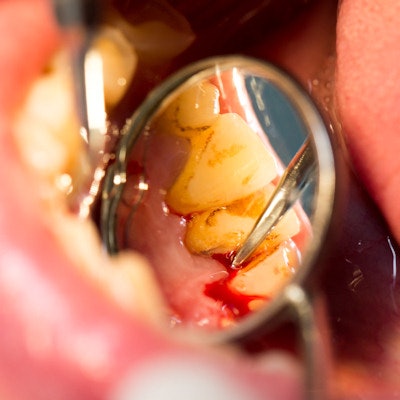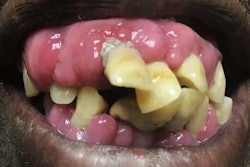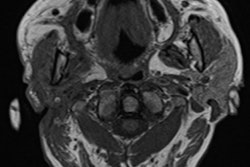
Researchers from the ADA Science & Research Institute and National Institute of Standards and Technology developed a prototype device that measures changes in gingival temperature. They showcased the device on July 23 at the International Association for Dental Research (IADR) virtual meeting.
The device is roughly the full length and half the width of a U.S. dollar bill. It contains a sensor and Bluetooth system that can measure temperature and report data back to a computer within one second. The device may be useful for diagnosing periodontal disease, the authors noted.
"As a result of inflammation, gingival temperature is increased by raised blood flow and metabolic reaction as a host response, which means that the measurement of a periodontal pocket temperature could be a simple and useful indicator for detecting periodontal disease activity," they wrote in their presentation.
The team embedded a tiny temperature sensor within a portable periodontal probing device. They fabricated the sensor using a flexible, thin film made with platinum, which they chose because of its linearity and resistance to change. The device also features a rechargeable battery and a Bluetooth communication system that transfers and logs data in real-time.
Researchers tested the device's temperature-sensing abilities using the relationship between temperature change and consequent resistance change. They also performed additional tests in distilled water, phosphate-buffered saline, and artificial saliva.
The temperature sensors had a variance below 2%, the authors reported. In addition, the sensors maintained their linear tendency in all three solutions.
The team then performed a longevity test by dipping the device 100 times in water ranging in temperature from 35° to 65° C. During the 100 cycles, the sensor experienced a change in resistance of less than 1%.
"This suggests that our microfabricated temperature sensors are applicable for accurate temperature monitoring in various oral environments," they wrote.
The experiment was partially funded through the ADA Foundation, the authors noted.



















